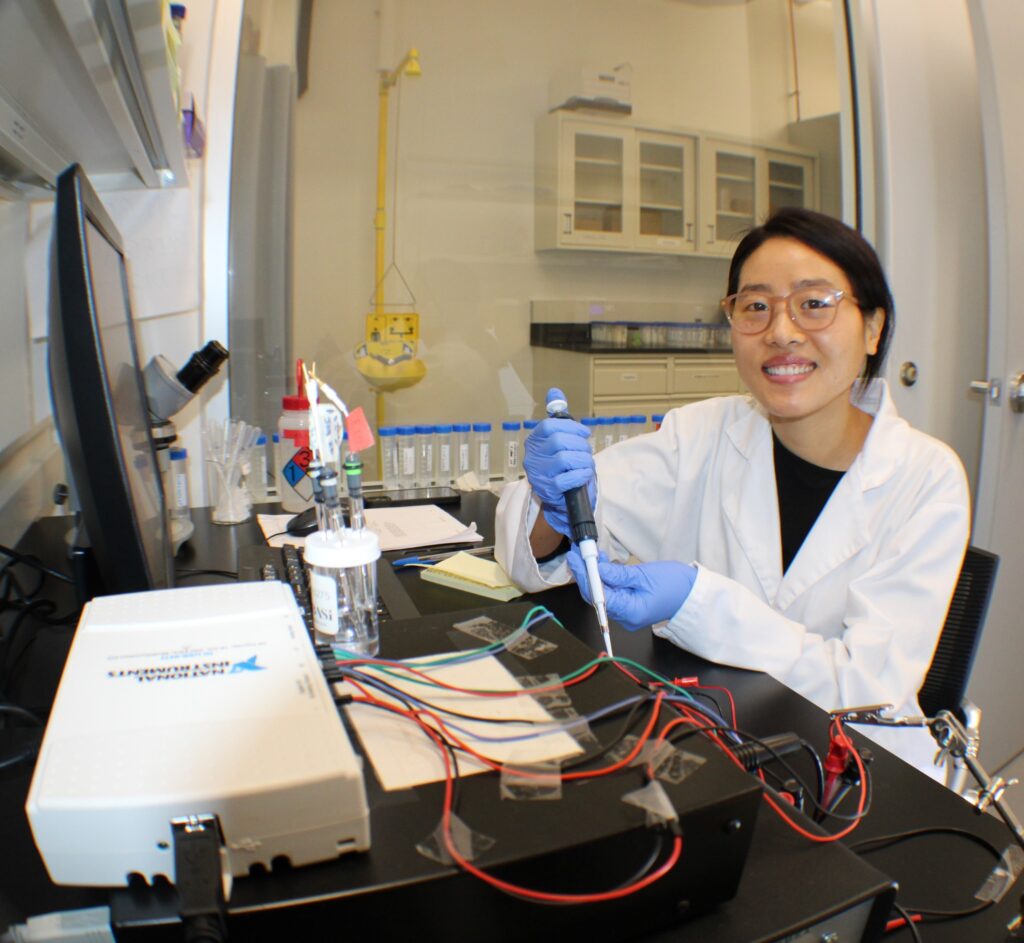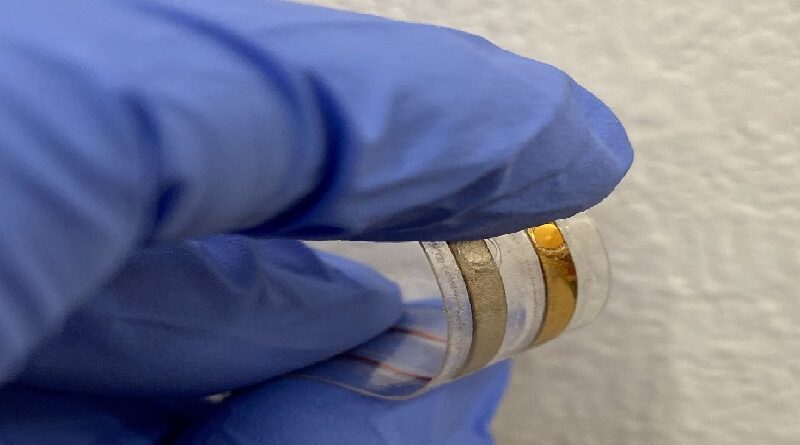SMU Student Makes Potential Next-Gen Food Freshness Predictor
Skeptical about the “use by” date on your groceries? An SMU graduate student has developed a miniature pH sensor that can tell when food has spoiled in real-time.
At only 2 millimeters long and 10 millimeters wide, the flexible pH sensor could fit into existing food packaging, such as plastic wrapping.
The lead creator of the sensor, Khengdauliu Chawang, a doctoral student in SMU’s Lyle School of Engineering, compared it to other small wireless radio-frequency identification devices, such as those used to track luggage at airports or ones used inside SMU IDs.
“Every time a food package with our device passes a checkpoint, such as shipping logistics centers, harbors, gates or supermarkets’ entrances, they could get scanned, and the data could be sent back to a server tracking their pH levels,” Chawang said. “Such configuration would allow continuous pH monitoring and accurately detect freshness limits along the entire journey – from farms to consumers’ houses.”

Roughly 1.3 billion metric tons of food produced worldwide go uneaten every year, according to the Food and Agriculture Organization of the United Nations. Nearly 40% of food – approximately 130 billion meals – is wasted in the United States, according to Feeding America estimates.
The issue is personal for Chawang, an electrical and computer engineering graduate student from a remote region in India where the population relies heavily on crops.
“Food waste in Nagaland means undernourished children and extra fieldwork for the elderly to compensate for the loss,” Chawang said. “The need to prevent food waste motivated me to think of a device that is not expensive or labor-intensive to develop, is disposable, and can detect freshness levels.”
Food freshness directly correlates to pH levels, Chawang explained. For example, food with a pH level higher than the normal range indicates spoiled food, as fungi and bacteria thrive in high-pH environments. So sudden pH changes in food storage during production and shipping can indicate possible food spoilage.
The pH level is measured by the concentration of hydrogen ions in a substance or solution.
Because hydrogen ions are electrically-charged molecules, the electrodes within Chawang’s pH sensor can detect the electrical charge generated by the concentration of hydrogen ions inside food, converting the level to pH values using what is known as the Nernst equation.
The pH sensor has successfully been tested on food items like fish, fruits, milk, and honey, Chawang said.
The Institute of Electrical and Electronics Engineer’s (IEEE) Big Ideas competition at the 2022 IEEE Sensors Conference honored Chawang with the Best Women-owned Business Pitch for her invention, which she built with the support of J.-C. Chiao, the Mary and Richard Templeton Centennial Chair and professor in the Lyle School’s Electrical and Computer Engineering Department.
The sensor is made with a tiny amount of biocompatible materials, using printing technologies on flexible films.
“The entire process is similar to printing newspapers. The processing does not require expensive equipment or semiconductor cleanroom environment,” Chiao said. “Thus, the costs are low and make the sensor disposable.”





